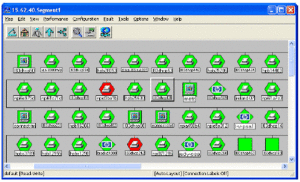 Hewlett-Packard is expanding the scope of its OneView infrastructure management console, releasing a OneView plug-in that should help system administrators more efficiently manage their VMware vCenter operations with OneView functionality.
Hewlett-Packard is expanding the scope of its OneView infrastructure management console, releasing a OneView plug-in that should help system administrators more efficiently manage their VMware vCenter operations with OneView functionality.
“A lot of people use vCenter and find it very effective, and it would be foolish for us not to provide value there,” said Brad Kirby, HP group manager for converged systems.
Introduced last September, HP OneView provides lifecycle management capabilities for HP servers, and, coming soon, networking equipment and storage systems.
OneView can be used for troubleshooting difficult-to-pinpoint problems that may happen between different components, through a visual map of all the resources and how they are connected. “OneView understands the relationships between all the components,” Kirby said. It can also be used to automate routine system management operations, through the use of a REST (representational state transfer) API (application programming interface).
The new vCenter plug-in, which works through the vCenter console, will allow administrators to manage and automate operations around vSphere hosts and clusters. The plugin can save time in a number of ways, Kirby said.
It can be used to deploy a cluster more quickly. Setting up a new cluster in vSphere can be a cumbersome process, involving configuring single sign-on, configuring the file settings, updating the server’s firmware, and deploying the hypervisor. Typically, to set up a cluster, an administrator would have to go through 15 steps, HP estimated.
With OneView, creating a cluster takes five steps, and is 12 times faster than doing it manually, HP said. “At the end of the process, you have a fully functional cluster, and you are ready to start deploying virtual machines to that cluster,” Kirby said.
OneView can also provide some advanced visualisation capabilities, which can be handy for understanding how resources are configured. With vCenter deployments, OneView allows the administrator to visually trace a connection through the physical layers to the virtual layers.
“We’ll show you the bandwidth of those connections, any faults on those connections, and a short period of performance data on those connections,” Kirby said.
For storage systems, the vCenter console can show how virtual machines are mapped to data stores and individual disk volumes.
vCenter users can also now take advantage of OneView’s API to automate many VMware maintenance tasks. OneView offers an activity feed that provides notifications of technical issues and configuration changes. Another application or script can monitor the feed and when changes occur, it can call the API to carry out remedial actions, such as collecting additional data, send alerts or update firmware.
HP plans to introduce additional plug-ins for OneView, based on customer feedback, and is also encouraging third-party independent software vendors to create their own plug-ins, using the API. “There will be other management applications to follow,” Kirby said.





